Los Islotes Panama: Peace, Privacy, and Pink Sunsets
I’ve made a career battling rose-colored viewpoints. No place is perfect, I remind you regularly, dear reader. Everywhere has its...
Top Destinations:
Whether you’re looking for fun and sun, a peaceful retirement, or the chance to earn some extra income, you’ve got a real world of opportunity open to you… In short, we’ve done our best to narrow down your best options, but only you can decide the right country for you.
Best For:
How Much Will It Cost You To Live Overseas?
The only honest answer is, we have no idea. And neither does anyone else. The only one who can answer that question is you. Here’s the most important thing to understand about budgeting your new life overseas…
Follow Us:
Join our Weekly Newsletter
Overseas Property Alert
Sign up for our weekly newsletter to receive expert insights on the best international real estate investment opportunities.
Upcoming Events
Live and Invest In Spain Conference
Offshore Wealth Summit
Greece Workshop
VALENCIA, SPAIN
Sep. 17-19, 2025
PANAMA CITY, PANAMA
Oct. 15-17, 2025
VIRTUAL
Nov. 13, 2025
Contact Our Events Team
Reach us with your questions by email at: events@liveandinvestoverseas.com
Unlock The World
Overseas Havens Reports
Conference Kits
Lahardan Books
Our Customer Service team is here to assist with any questions or concerns CustomerService@LiveandInvestOverseas.com
Top Destinations:
Whether you’re looking for fun and sun, a peaceful retirement, or the chance to earn some extra income, you’ve got a real world of opportunity open to you… In short, we’ve done our best to narrow down your best options, but only you can decide the right country for you.
Best For:
How Much Will It Cost You To Live Overseas?
The only honest answer is, we have no idea. And neither does anyone else. The only one who can answer that question is you. Here’s the most important thing to understand about budgeting your new life overseas…
Follow Us:
Join our Weekly Newsletter
Overseas Property Alert
Sign up for our weekly newsletter to receive expert insights on the best international real estate investment opportunities.
Upcoming Events
Live and Invest In Spain Conference
Offshore Wealth Summit
Greece Workshop
VALENCIA, SPAIN
Sep. 17-19, 2025
PANAMA CITY, PANAMA
Oct. 15-17, 2025
VIRTUAL
Nov. 13, 2025
Contact Our Events Team
Reach us with your questions by email at: events@liveandinvestoverseas.com
Unlock The World
Overseas Havens Reports
Conference Kits
Lahardan Books
Our Customer Service team is here to assist with any questions or concerns CustomerService@LiveandInvestOverseas.com
LIVE AND INVEST IN PANAMA

WORLD’S #1 RETIREMENT HAVEN
IN THE AMERICAS
We Value Your Privacy! We will not share your email address with anyone else, period.
Home » Best Countries To Live, Invest, And Retire Overseas » Panama : Everything You Need To Know In 2025 » Travel In Panama
Don't overestimate Panama's size, allow plenty of time for traveling here. We list the best places to visit and how to travel in Panama.
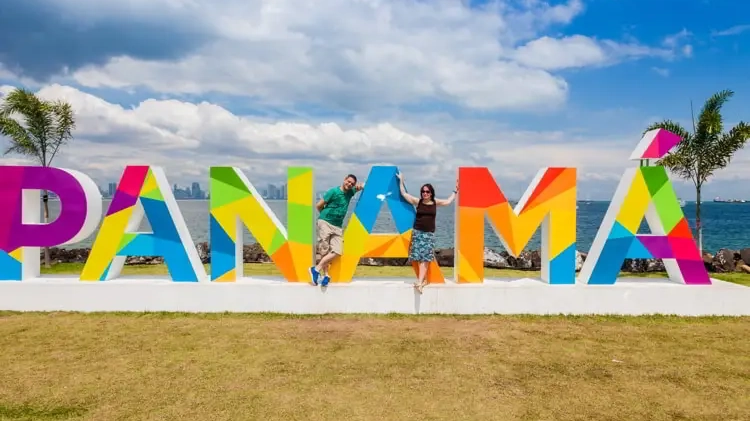
Ready to travel in Panama? Panama City, the bustling capital of Panama, is recognized as the only real First World city in Central America. The country features delightful mountain getaways and picturesque rural communities, as well as countless miles of beautiful beaches lining both the Pacific and Caribbean coasts.
So you decided to travel in Panama … On the map Panama is a small country. It has a land mass of 74,177 km2. Only 10 U.S. states are smaller than Panama. And, you might look at Panama and figure you can visit for 7 days, travel across the whole country, and still have time left to kill.
The main highway in Panama would seem to back up this theory. When you hire a car you can travel from Yaviza, where the highway begins in the east, to Bocas del Toro or David in the west, in under 14 hours.
But, these times are calculated assuming a trouble-free journey, with no traffic or roadworks. Making assumptions in Panama is a fool’s game.
The highways in Panama are more closely monitored for speeding than in other countries. As a result, you’ll find lots of roadside police checking for speeding.
Once you get off the motorways the roads can be poorly maintained. What looks like a small stretch of road on the map can take a long time to navigate in reality.
Most importantly, allow plenty of time for traveling in Panama. It is easy to look at the size of the country and get over-ambitious about how much you can fit into your stay.

Reviewed By Kathleen Peddicord
Kathleen is the Live and Invest Overseas Founding Publisher. She has more than 30 years of hands-on experience traveling, living, and buying property around the world.

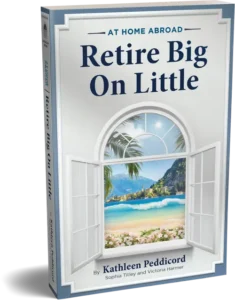
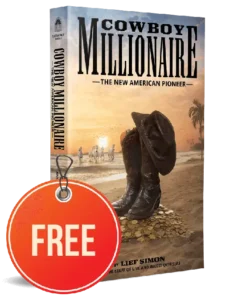
Start Your New Overseas Life Today
A world full of fun, adventure, and profit awaits! Sign up for our free daily e-letter, Overseas Opportunity Letter, and we’ll send you a FREE report on the 10 Best Places To Retire In Style Overseas Today 2024
We Value Your Privacy! We will not share your email address with anyone else, period.
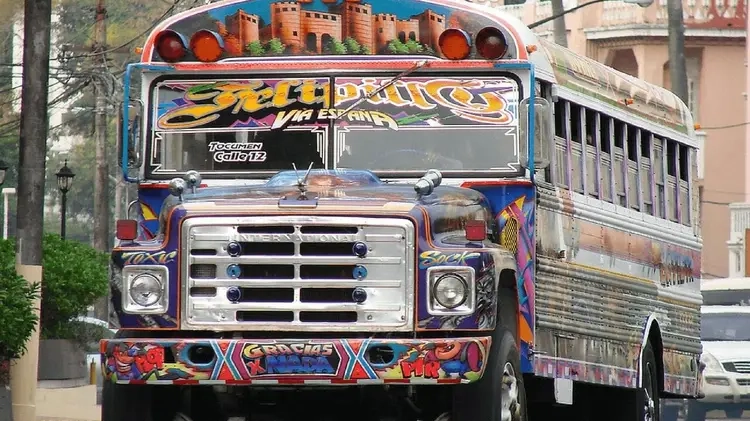
Panama has an extensive and well-priced bus network. The main terminal is Albrook Mall and Bus Terminal, Panama City. Most of the longer route buses are air-conditioned.
Firstly, the shorter routes are often done by the legendary ‘Diablos Rojos’: Former U.S. school buses which have been painted and modified to Panama’s style.
They are a common sight on the streets of Panama, careering round in a race to pick up passengers before another service provider gets them. Despite this, it is not uncommon to be waiting a while for buses in Panama City as they don’t have a schedule.
For long-distance trips, such as Bocas Del Toro you should consider an internal flight via Air Panama. Air Panama is the national airline and has flights from Panama City to a number of towns and cities in Panama.
They now do international flights to Costa Rica and Colombia.
Panama City has a Metro allowing you to travel quickly within the city limits. At the time of writing new lines are still under construction.
The other popular way of traveling around in Panama City is by taxi. There are plenty of traditional yellow cabs which will drive you around the city. But, before you travel with these cabs you need to beware of a few helpful pieces of information. Firstly, the taxi drivers never seem to have change.
Make sure you some low denomination notes and also coins in your possession. It is wise to negotiate the fare with the driver before you begin your journey.
Secondly, taxi drivers will sometimes look to take advantage of tourists or foreigners. Another option is to use a travel app such as Uber where you won’t have the problem of surprise charges.
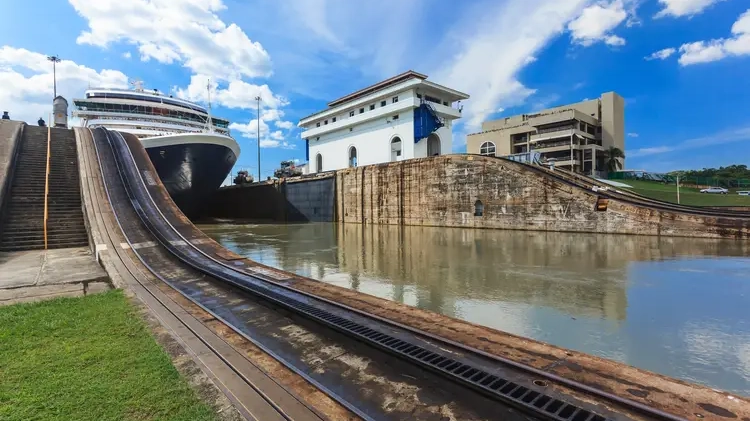
The Canal is what modern Panama is built on. A 77km stretch of water, connecting the Pacific and the Atlantic Ocean. It is one of the engineering masterpieces of the modern world and created a new climate of trade.
If you travel to Panama, the Canal is a ‘must see’. The main visitor center for the canal is at Miraflores locks, on the outskirts of Panama City. A ticket costs $15 for tourists but less for Panamanian nationals and retirees.
The locks is a visitor center with a museum. Information and pictures show how the canal was built and its history to the present day. There are also artifacts from the construction. Other floors show examples of the biodiversity of plants and animals by the canal.
Also, a small cinema shows footage of the Canal throughout the years.
Construction on the canal began with the French in 1881 but in 1889 they ended the project. Unable to find the engineering solutions needed progress had been slow.
Masses of mosquitoes plagued the workers and malaria was rife. It is estimated over 20,000 died.
Work on the canal was taken up by the U.S in 1904 and completed in 1913. The mosquitos were eradicated and advances in engineering allowed the U.S. to triumph where the French had failed.
The U.S. remained responsible for day to day running of the canal until 2000 when they handed over control to Panama. Since then Panama has been solely in charge of the canal.
Profits have increased and there are fewer accidents than when the U.S. was in charge. In 2006 Panamanians approved a referendum to increase the size of the canal. This work was completed in June 2016 and allowed larger vessels, paying more money, to pass through.
The Miraflores locks are one of the best places to see the ships up close. From here you can see the huge vessels navigate the locks. from the world.
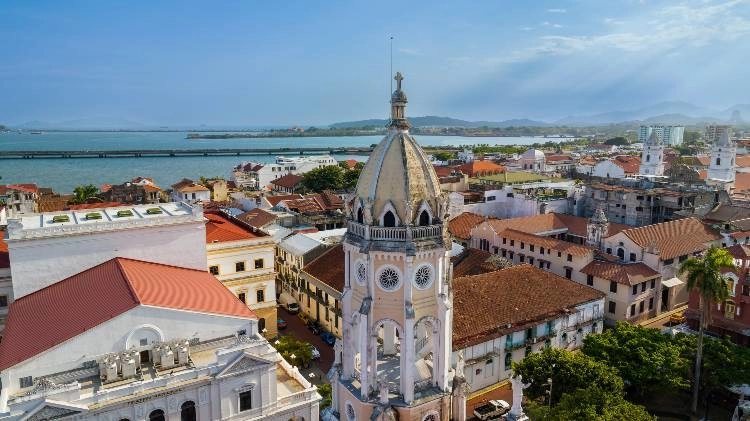
Casco Viejo is the historic part of Panama City. When Henry Morgan sacked the original city, they rebuilt on the site of what is now Casco Viejo.
The ruins of the old town still lie next to Casco. 20 years ago Casco Viejo was best avoided by tourists. After a renovation effort it is one of the most desirable areas in Panama.
In short, Casco is a favorite location to pick up souvenirs. There are shops selling Panama hats as well as stalls and shops with Panamanian products like molas.
Casco is home to many of the remaining colonial style buildings in Panama City. Walking through the streets is a contrast to the rest of the Panama City which is a maze of glass and concrete.
Casco has lots of the best bars in Panama including plenty of rooftop bars with panoramic views of the city.
The Metropolitan Cathedral, San Jose Church and Panama Canal Museum are the main tourist attractions. The gold display in the San Jose church is particularly impressive.
Parking spaces can be hard to come by so if you have a hire car consider taking the trip to Casco by taxi or bus.
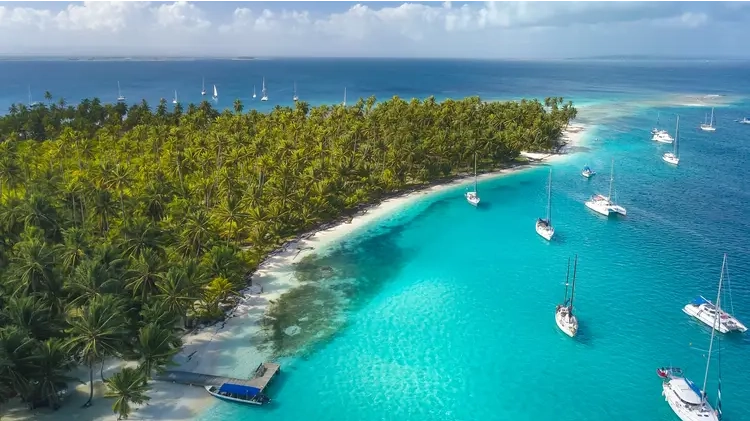
San Blas is a collection of 378 small islands on Panama’s Caribbean coast. San Blas is semi-autonomous from Panama, under the control of the indigenous community, the Guna.
Traveling by car to San Blas takes around 3 hours from Panama City. Above all, you will need a 4×4 vehicle to make this journey.
The border of San Blas and Panama is at the start of a mountain range. Here you must pay an entrance fee, and this is also as far as your car will be comfortable going.
After passing through the check-point you have a slow windy drive up and down some steep mountains. You’ll find spectacular views from the top but also some immensely steep drops over the side.
But, when you are driving don’t take your eyes off the road. The drive takes about 1 hour and leads you to a small port where the boats leave from.
There are all kinds of tours and experiences for someone traveling to San Blas. You can do a simple day trip where you will take in a couple of islands have a meal and return in the evening.
Another option is to get on a sailboat and go from San Blas round to Portobello or around a longer tour of the islands. One of the most popular options is to stay 2 days and 1 night.
You can either camp out on the beach, under the stars or in one of the tiny log cabins which sit on top of the water.
The islands of San Blas are small and evocative of Robinson Crusoe. The waters are clear blue and the white sand beaches are lined with palm trees. For many people, they are the quintessential tropical islands.
The islands allow for swimming, snorkeling, and SCUBA diving as well as relaxing on the beach. And, be sure to wear plenty of sunscreen here, the sea breeze and reflective sea water make it easy to burn without realizing.
After passing Lake Gatun, you have an opportunity to cross the canal by car at the Gatun Locks. Driving over the locks up close you get a new perspective on the Panama Canal.
The locks also allow a chance to see ships up close. The novelty of seeing huge ocean liners on a calm freshwater lake is worth seeing.
Driving past Fort Sherman, the now abandoned U.S. military base, the last stretch of the journey takes you through the jungle to San Lorenzo Fort.
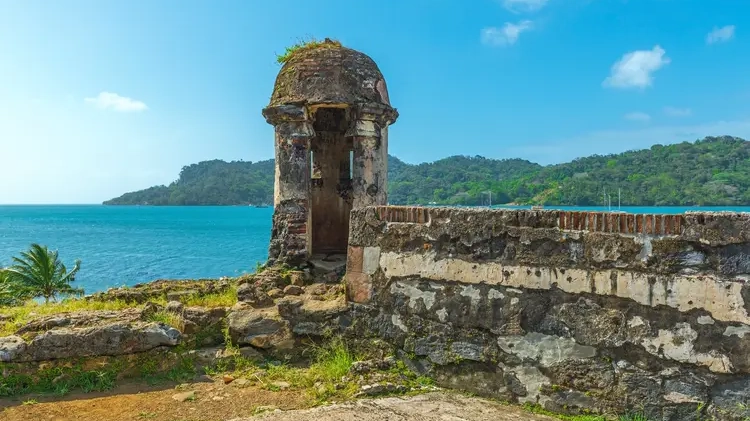
Traveling to Fort San Lorenzo takes around 2 hours from Panama City and is well worth the journey. As well as Fort San Lorenzo, the trip gives you a chance to take in Lake Gatun, Lake Gatun locks, and some of Panama’s famous rainforest.
You can hire a car or make the trip through a tour company.
The road is well maintained, no need for an off-road vehicle. The jungle is thick and full of wildlife. From the road, you can expect to see monkeys, sloths, and Nasua, known as Gato Solo.
The Gato Solo is a huge omnivorous cat with raccoon-like features. Many are not scared of cars so are fairly common by the side of the road.
Plus, if you park your car and venture onto down one of the jungle paths you will be able to see more animals, birds, butterflies and plants.
Fort San Lorenzo is situated at the mouth of the Chagres River. It was built by the Spanish in 1595 for its important strategic location.
It is a UNESCO World Heritage Site and well preserved and maintained. As well as the Fort, the views of the Caribbean coast and the River Chagres are spectacular.
Seeing the waves break over the reefs offshore makes you wonder how many shipwrecks this part of the coast must have.
Many of the cannons used to defend the fort are still in place pointing out across the sea.
Mysteriously at least one of the cannons carries the British Crown Insignia. There are stalls in the car park selling cold refreshments and souvenirs.
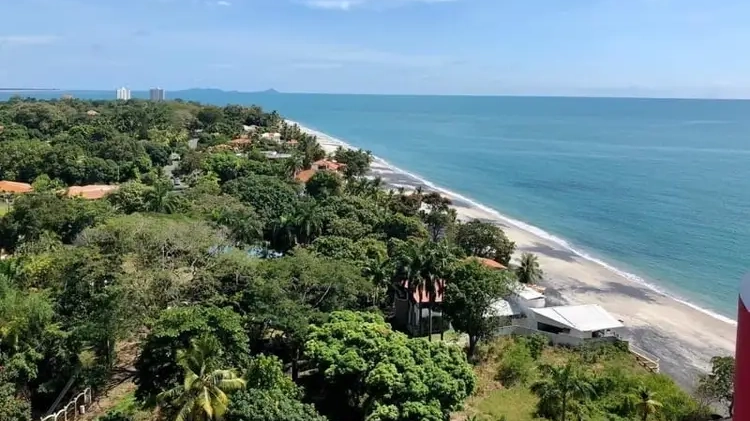
The town of Coronado is at the center of an area known as the ‘City Beaches’.
Coronado is situated about 1 and a half hour drive west of Panama City. It is where Panamanians flock to for the weekends and public holidays.
Also, Coronado is one of the most famous destinations in Panama and has received glowing reviews from Yahoo among others.
The area is also a haven for expats who have formed strong communities here.
There are golf clubs, expat owned bars and restaurants and a range of shops which cater to this market. And, Coronado has resorts, luxury houses and apartments and some of the best beaches in Panama.
Due to the lack of rainfall, this area receives it is a reliable choice for Panamanians looking to spend time at the beach.
Coronado’s close proximity to Panama City makes it an easy choice for a visit.
You can make it a day trip or spend as much time here as you like. Traveling by car or bus is straightforward.
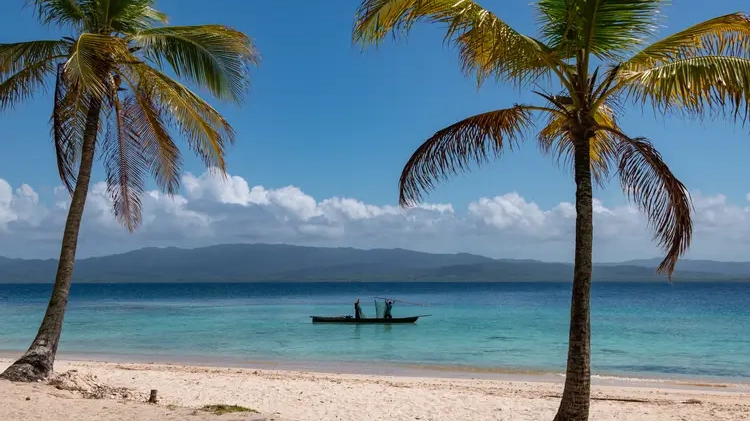
Iguana Island is a small, 136-acre, island off the coast of the Azuero Peninsula. Iguana Island makes for an excellent day trip.
Formerly a U.S. military base it is now a protected nature reserve. Close to the sleepy town of Las Tablas you can drive here in under 4 hours from Panama City.
Traveling to Iguana Island means hiring a boat from Pedasi. You can see Humpback whales from the boat if you are lucky.
Most importantly, bring food and drink with you because they do not have any restaurants or shops on the island.
The beach has nowhere to charge electrical items so make sure they are fully charged before you arrive. Also, the island is fairly exposed so take sunscreen and a hat or umbrella for shade.
Iguana Island benefits from white sand beaches and crystal clear blue seas. This is unusual for the Pacific Ocean and makes Iguana Island fairly unique on the Pacific side.
Being called Iguana Island, you won’t be surprised to find out the Island is full of Iguanas. They can be quite bold and will steal any food left unattended.
The beach is also home to a large population of hermit crabs and Frigatebirds. These birds can stay in the air for up to two months at a time, gliding on air currents to preserve energy.
Offshore the reef is home to lots of species of fish and some eels. Snorkeling in Iguana Island is rewarding. You can easily hire snorkeling equipment from the boat captains who ferry people over to the islands.
To protect the reefs you can only snorkel when the tide is in so make sure you check the tide levels if you are only visiting for a half day.
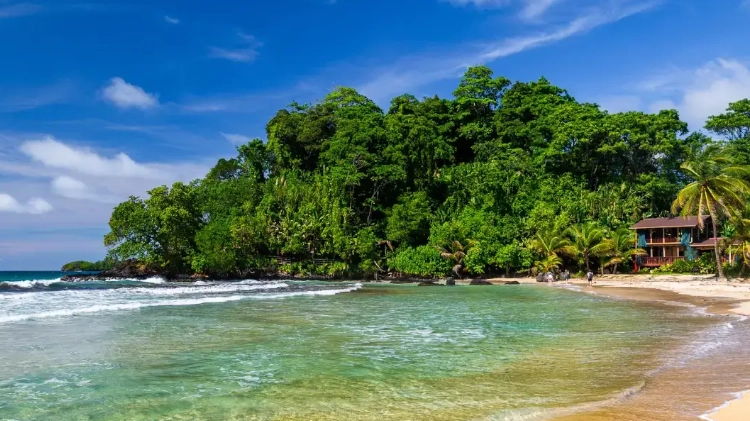
Bocas del Toro is a collection of islands and some mainland on Panama’s western Caribbean coast. As well as the main 9 islands there are hundreds of tiny islands to visit and explore.
Most importantly, Bocas is the heart of Panama’s growing Eco-tourism industry. However, most of the area doesn’t have an electricity grid so solar and water provide much of the power.
So, if you are traveling here by car you will need to allow a day to drive from Panama City.
The journey will take around 12 hours. Lots of people choose to fly which takes less than 2 hours.
Bocas del Toro offers plenty of accommodation options to suit all budgets.
You can choose from something as simple as renting a tent all the way through to a luxury lodge. The prices vary depending on what you want.
You will not be lacking things to do in Bocas. It has some of Panama’s best beaches. You can go to a tourist-oriented beach like Red Frog Beach or get a boat to one of the small empty beaches.
Also, Bocas is a prime destination for snorkeling. The mangroves are a nursery to an array of different fish. You can also see dolphins if you travel further out.
Bocas is one of Panama’s best surfing locations. As a result, people are now traveling from all over the world to Bocas for the consistent warm water waves. There are beach breaks and reefs to suit all abilities.
Plus, Bocas also has surf schools and places offering board hire.
Bocas is popular with backpackers and surfers and has the reputation of being a party town. Therefore, you’ll see lots of bars including one with a water trampoline.
Most nights you will be able to find a rum-fuelled party somewhere. If alcohol-induced mayhem is not your scene, you can find tranquility here easily enough.
Many remote islands offer a complete escape from the world.
So, if you are traveling here by car you will need to allow a day to drive from Panama City.
The journey will take around 12 hours. Lots of people choose to fly which takes less than 2 hours.
Bocas del Toro offers plenty of accommodation options to suit all budgets.
You can choose from something as simple as renting a tent all the way through to a luxury lodge. The prices vary depending on what you want.
You will not be lacking things to do in Bocas. It has some of Panama’s best beaches. You can go to a tourist-oriented beach like Red Frog Beach or get a boat to one of the small empty beaches.
Also, Bocas is a prime destination for snorkeling. The mangroves are a nursery to an array of different fish. You can also see dolphins if you travel further out.
Bocas is one of Panama’s best surfing locations. As a result, people are now traveling from all over the world to Bocas for the consistent warm water waves. There are beach breaks and reefs to suit all abilities. Plus, Bocas also has surf schools and places offering board hire.
Bocas is popular with backpackers and surfers and has the reputation of being a party town. Therefore, you’ll see lots of bars including one with a water trampoline.
Most nights you will be able to find a rum-fuelled party somewhere. If alcohol-induced mayhem is not your scene, you can find tranquility here easily enough. Many remote islands offer a complete escape from the world.
We remind you often of the opportunities on offer in Panama for the retiree… the investor… the second-home-at-the-beach buyer… and the entrepreneur…
Indeed, this country continues to offer some of the world’s best chances for making money and doing business.
We’re so focused on that face of Panama that sometimes we neglect Panama’s other side… her natural aspect.
Panama is a natural marvel. Few places on Earth offer the wildlife-watching, close-to-nature experiences you find here.
This country’s ecological riches are thanks to volcanic activity that took place more than 3 million years ago, when the Isthmus of Panama and Central America arose. This formed a land bridge between South and Central America that, in the millennia to follow, creatures of all descriptions have used to migrate from north to south and vice versa.
As a result, Panama is one of the most biodiverse places on Earth, with many species found here and only here.
This country has more endemic species even than Costa Rica.
Panama is a land of jaguars, pumas, ocelots, whales, and sharks… a land where you can find animals with fabulous names, including the nine-banded armadillo, the resplendent quetzal, and the limosa harlequin frog… a place where bats eat fish and frogs are poisonous…
If you love birds, you’ll never want to leave. And, of course, Panama has sloths.
Seeing animals in a zoo is one thing. But for a nature-lover like me not much compares with the thrill of spotting wild animals in their natural habitats.
You don’t need to go far from Panama City to experience the wildlife this country has to offer, and the city itself is full of nature… starting with its bird life.
City locals hang sugar-water-filled bird feeders on their balconies to attract feathered characters. They really are characters…
Hummingbirds defend what they consider “their” feeders with extraordinary vigor. For such tiny birds they pack a lot of punch. I’ve seen them chase away birds much larger than themselves with an attitude and aggression you’d expect from a lion defending its prey from a pack of marauding hyenas.
Woodpeckers, parakeets, and brilliantly colored sunbirds in shades of blue, purple, and red are also attracted to bird feeders, if they’re brave enough to endure the dive-bombing tactics of the hummingbirds—and you can watch them all from the comfort of your home while sipping a cup of tea.
In 2014 a record-breaking 2 million raptors were counted in the skies above Panama City. In one day.
Look out for this avian spectacular sometime in October or November.
Other best options for a wildlife adventure in this country?
Here Are Our Top 10 Picks:
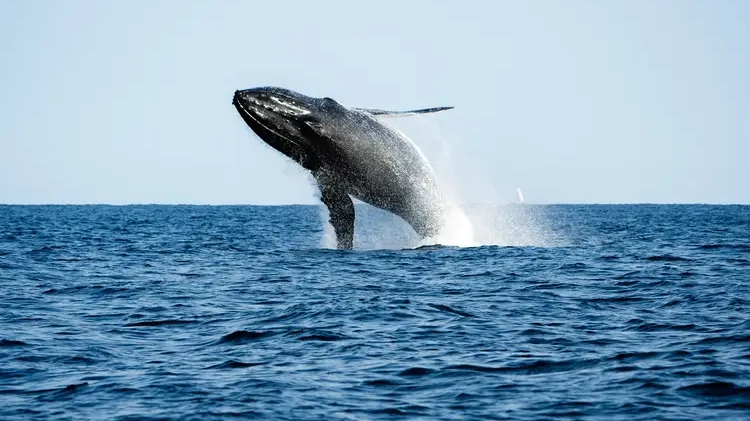
Panama’s annual humpback whale migration is another wildlife event to highlight in red on your calendar. If you’ve got kids or grandkids visiting, you cannot miss this.
Between July and October, the Pacific coast of Panama plays host to humpback whales migrating from both the north (Alaska) and the south (the tip of South America). They meet here in the middle to mate and give birth.
They couldn’t have picked a better spot for their courting rituals… the water’s warm and the weather’s great.
Need a quick and easy escape from the city? A 10-minute cab ride from the center of town gets you to the tranquil surroundings of the Parque Natural Metropolitano.
Known as the “lungs” of Panama City, this park is an oasis from the city’s hustle and bustle. Bring your walking shoes, pick a trail, and just breathe in the beautiful, fresh, rain forest air.
There’s a lookout point where you can snap a picture of the city skyline framed by the rain forest. If you’re lucky you might spot a sloth or titi monkey in the process.
Don’t expect the likes of the San Diego Zoo when visiting the Summit. It’s small but absolutely beautiful.
The Summit was begun in 1923 to introduce tropical plants from around the world; today, more than 15,000 species can be found here.
This park, one of the world’s premier bird-watching destinations, is only a short drive from Panama City, just past Summit Gardens.
Visit early morning for a chance to spot a toucan, a fasciated antshrike, a rufous motmot, a blue-headed parrot, and others of the more than 500 bird species that have been recorded in the area.
Plus, if you’d like to do more than visit, you could become a bird-counting volunteer.
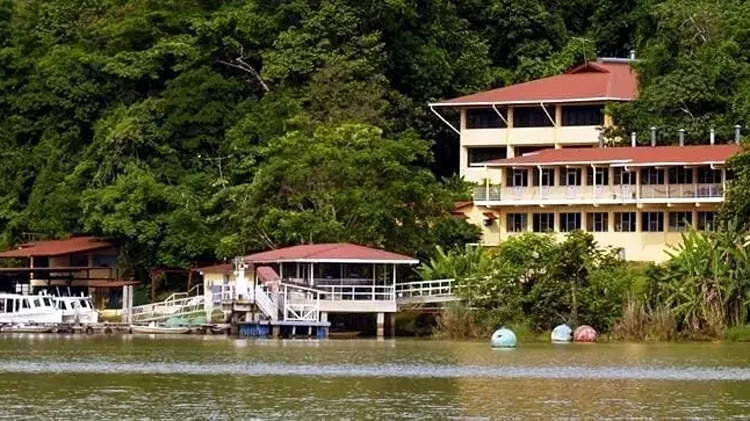
When the Panama Canal was created, the Chagres River was dammed up and what was left was the astonishingly wild Gatún Lake.
In the middle of this lake is Barro Colorado, a 15-square-kilometer island that’s managed and run by the Smithsonian Tropical Research Institute (STRI) as a biological research station.
The best part? You can visit for a day tour, which includes your transport from Panama City, and they even throw in lunch. It’s definitely worth the trip, as an expert guide will accompany you on a walking trail, pointing out things you’d miss on your own.
The walk takes about three hours, and you’re likely to see some of Panama’s most charismatic and entertaining animals: monkeys! Barro Colorado is home to spider monkeys, white-faced monkeys, Geoffrey’s Tamarins, howler monkeys, and night monkeys.
The first Sunday evening of every month (weather permitting), you can join a team of scientists from the Smithsonian Tropical Research Institute on a “bat tour” on Barro Colorado Island.
Some of the most misunderstood creatures on our planet, bats are fascinating and valuable. If you think Panama has a mosquito problem now, imagine what the mosquito population in this country would be without bats.
This is one more place where Panama breaks a wildlife record: Barro Colorado Island is home to more than 74 species of the flying mammals.
In the Azuero Peninsula between July and September, you might be fortunate enough to see the thousands of olive ridley sea turtles who come to shore to nest and lay eggs on Isla de Cañas.
The island is one of only five places in the world where this species nests in such huge numbers—up to 50,000 have been recorded in previous seasons.
Seeing the turtles is a nighttime adventure, and you’ll have to hire a guide. Bright lights affect turtles so flashlights and flashing cameras are a big no-no. This is one time you’ll have to take mental pictures.
Boquete, in Panama’s Chiriquí province, is the place you’re most likely to spot the elusive resplendent quetzal so prized by birders.
Quetzals are the stuff of legend and folklore, seen as a symbol of freedom. It’s believed that these birds will not survive if held in captivity.
Boquete is the best place in the whole of Central America to catch a glimpse of one of them. Besides that, the scenery here is spectacular—there’s nothing like watching the mist rolling in over the endless green mountains covered in dense cloud forest.
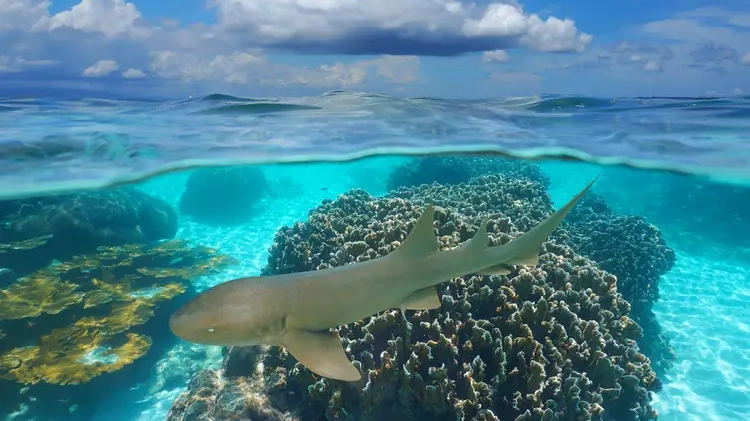
If diving with sharks and rays is your idea of adventure, Isla de Coiba, off the coast of Veraguas province, will not disappoint.
I bumped into a friend recently who’s gone scuba diving just about everywhere in the world, so his “I just had the best dive of my life” really got my attention. He’d just returned from Isla de Coiba, where, in 3 feet of water, he’d found himself surrounded by white-tip sharks and eagle rays.
Declared a National Park in 1991, this former penal colony was virtually devoid of human interference for years, meaning its wildlife, both in its impenetrable jungles on land and the marine life surrounding it, was left undisturbed. It’s now known as the “Galápagos of Panama.”
If sportfishing is your thing, it doesn’t get better than the waters off Isla de Coiba. Remember your permit.
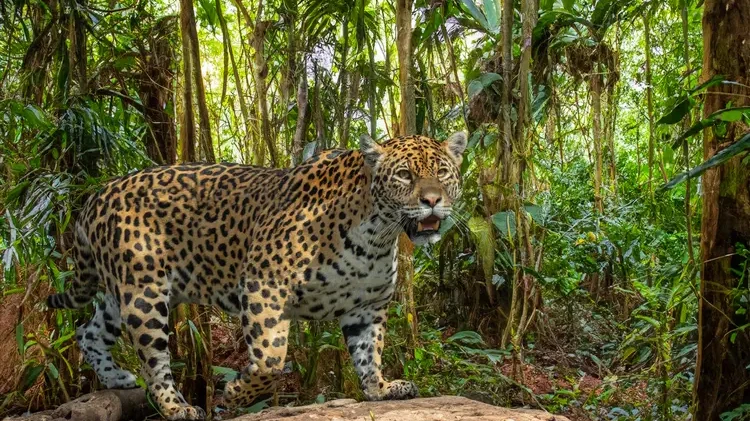
While Panama has no shortage of national parks, one stands head and shoulders above the others. The “big daddy” of them all, the Darién National Park, is not for the faint-hearted.
Bordering Colombia, this almost impenetrable wilderness is most famous for its reputation as a safe haven for guerillas and narcotics traffickers. That aside, the Darién will give any intrepid wildlife-crazy adventurer the experience of a lifetime.
To enter the park, you must apply for a permit and you must travel as part of a tour or with a local guide.
It’s not cheap or easy but definitely rewarding.
The Darién is home to an impressive 169 species of mammals, including endangered Central American tapirs, jaguars, giant anteaters, plus more than 530 species of birds, including huge flocks of macaws and one of the largest populations of harpy eagles.
In short, when you travel in Panama make a dent in your agenda… we know you’ll enjoy yourself.

Reviewed By Kathleen Peddicord
Kathleen is the Live and Invest Overseas Founding Publisher. She has more than 30 years of hands-on experience traveling, living, and buying property around the world.



Start Your New Overseas Life Today
A world full of fun, adventure, and profit awaits! Sign up for our free daily e-letter, Overseas Opportunity Letter, and we’ll send you a FREE report on the 10 Best Places To Retire In Style Overseas Today 2024
We Value Your Privacy! We will not share your email address with anyone else, period.
Panama is one of the safest countries for traveling and backpacking in Central America. But, be vigilant for petty crimes like bag snatching and don’t leave your valuables unattended.
Yes, it is safe to drive in Panama. However, be aware that car rental agencies are scarce outside of Panama City. Rentals cost up to US$20 per day plus additional fees and insurance.
Hitchhiking isn’t common in Panama. Plus, it’s something we would not recommend doing.
I’ve made a career battling rose-colored viewpoints. No place is perfect, I remind you regularly, dear reader. Everywhere has its...
After three months in Paris, Lief and I repositioned yesterday to Panama in time for this week’s International Property Summit.It’s...
My mom’s knee had been giving her trouble for years. By the time she finally saw a doctor, there was...
A Dream Home In Panama: As a reader of these dispatches, you’ll likely have heard of Boquete. In 2010, the...


We Value Your Privacy! We will not share your email address with anyone else, period.
As seen in

© 2008 – Live and Invest Overseas™ – All Rights Reserved.
Sign up to receive the FREE daily e-letter, Overseas Opportunity Letter and we’ll immediately email you our editors’ latest research report…
BEST PLACES TO RETIRE
FREE REPORT:
Sign up for FREE and learn how to live the good life on a modest budget, find bargain property, and more. Plus, check out our free report on the 10 BEST PLACES TO RETIRE.
RETIRE OVERSEAS AND LIVE LIKE ROYALTY
Top Countries
Budgets
Affordable
Resources
Real Estate
Overseas Property Alert
How To Become Independently Wealthy And Fund The Lifestyle Of Your Dreams
Buying Real Estate For Cashflow
Discover tips and strategies used by global property investing veterans
Explore Our Latest Posts
Learn how to invest and purchase property abroad…
Conferences
Live and Invest In Spain Conference
Offshore Wealth Summit
GREECE WORKSHOP
Contact Our Events Team:
Toll-Free U.S. and Canada:
1 (888) 627 8834
From Outside North America:
1 (443) 599 1221
Working Hours
Monday – Friday 08:00 am – 17:00 pm EST.
Reach us with your questions by email at: events@liveandinvestoverseas.com
Store
Overseas Havens Reports
Conference Kits
Lahardan Books
Services
Free Report
THE 10 BEST PLACES TO RETIRE IN 2025

Sign up to receive the FREE daily e-letter, Overseas Opportunity Letter and we’ll immediately email you our editors’ latest research report…
We Value Your Privacy! We will not share your email address with anyone else, period.
Follow Us:
© 2008 - Live and Invest Overseas - All Rights Reserved.